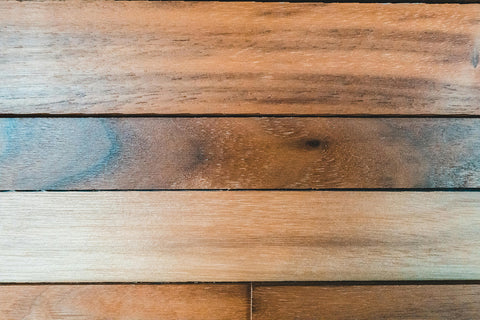Your Cart is Empty
Understanding How Different Types of Wood Can Affect Floor Scratching
March 06, 2024 2 min read

Wood flooring adds warmth, character, and value to homes, but maintaining its pristine condition requires knowing how different types of wood can impact scratching. While wood is renowned for its durability, not all types of wood are created equal when it comes to resisting scratches. Understanding the characteristics of various wood species can help homeowners make informed decisions about flooring choices and maintenance routines.

Hardness and Density:
One of the primary factors influencing a wood floor's susceptibility to scratching is its hardness and density. Woods with higher Janka hardness ratings are generally more resistant to scratches. For example, hardwoods likeBrazilian cherry, hickory, and oak tend to have higher Janka ratings and are less prone to scratching than softer woods like pine or cedar. This is because harder woods have a tighter grain structure, making it more difficult for scratches to penetrate the surface.
Grain Pattern and Direction:
Thegrain pattern and direction of wood also play a significant role in its susceptibility to scratching. Woods with open or pronounced grain patterns, such as oak or ash, may be more prone to scratching because the open pores in the wood can trap dirt and debris, which can then act as abrasives. Additionally, scratches may be more noticeable on woods with prominent grain patterns, as they can disrupt the natural flow of the wood's appearance.
Finish and Surface Treatment:
The finish and surface treatment applied to wood flooring can greatly impact its scratch resistance. A high-quality finish, such aspolyurethane or aluminum oxide, can provide a protective barrier against scratches and abrasions. Additionally, certain surface treatments, such as wire brushing or distressing, can enhance the wood's durability by adding texture and depth to the surface, making scratches less noticeable.
Environmental Factors:
Environmental factors such as humidity levels, temperature fluctuations, and exposure to sunlight can also affect a wood floor's susceptibility to scratching. Fluctuations in humidity can cause wood to expand and contract, which may lead to gaps or cracks in the floor's surface, making it more susceptible to scratches. Similarly, prolonged exposure to sunlight can cause wood to fade and become brittle, increasing the likelihood of scratching.
Maintenance Practices:
Proper maintenance practices can help prevent scratches and prolong the life of wood flooring. Regular sweeping and vacuuming can remove dirt and debris that can scratch the surface of the wood. Additionally, using furniture pads or area rugs in high-traffic areas can provide an extra layer of protection against scratches caused by furniture or foot traffic. It's also essential to clean up spills promptly to prevent moisture from seeping into the wood and causing damage.
In conclusion, the susceptibility of wood flooring to scratching can vary significantly depending on factors such as hardness, grain pattern, finish, environmental conditions, and maintenance practices. Homeowners looking to install or maintain wood flooring should consider these factors carefully to ensure their floors remain beautiful and scratch-free for years to come or invest in somefloor protection. By understanding the unique characteristics of different types of wood and implementing proper maintenance routines, homeowners can enjoy the timeless beauty of wood flooring without worrying about unsightly scratches.
Subscribe
Sign up to get the latest on sales, new releases and more …
